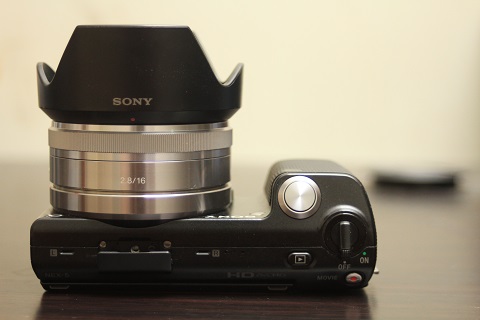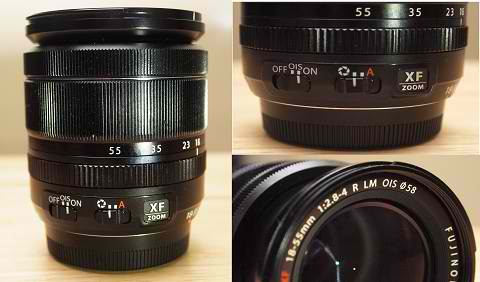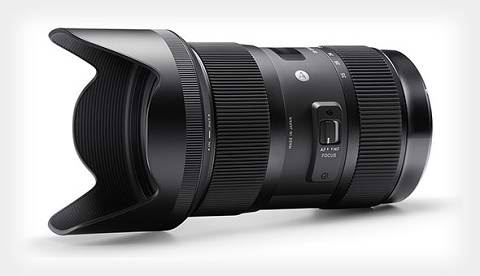Having a good set of lens is as equally important, if not more important, as having a good camera body. As such, it is important to know some of the different kinds of lenses, some of its basic features, and why pro photographers invest heavily on good optics.

The “brain-eye” analogy is the simplest life-like explanation that I can think of as to why photographers are bit picky with their lenses. Think of the camera body as our brain and the lens is our eyes. The amount of details and accuracy of a certain object depends on our eye’s ability to perceive it. Therefore, a photographer will only be able to truly harness his camera’s prowess if it’s paired to an equally-capable optics.
Types
Camera lenses are classified in many different categories (focal length, AF performance, etc.), but the most common of the lot is focal length which divides the lens in to two major groups –the Prime and Zoom lenses.

Prime lenses or commonly known as Primes are characterized by a fixed focal length (measured in mm or millimeter in photography). Often times, Primes possess a fast aperture (denoted by a lower F number which means bigger lens opening) which makes it a popular choice among photography aficionados as it allows them to compose shots with nice Bokeh (shallow depth of field, blur).
Another thing that shutterbugs love about primes is its size. Most prime lenses, especially those with double-digit focal length (28, 35 or 50mm), have a compact design which lessens some of the burden that’s brought by their big ass dSLR cameras. Some of these Prime lenses are also called Pancake lens because of short and almost flat body.
Zoom lenses, on the other hand, are the complete opposite of Primes as it has variable focal lengths. Because of its zooming properties, photographers can close in on a subject while still keeping the same distance; a feat that would otherwise be impossible when using a prime lens without physically moving closer to the subject.

One of the tradeoff of most zoom lens is aperture. As you zoom in, the lens’ opening narrows which lessens the amount of light coming in to the camera sensor, resulting to an underexposed (darker) image. As such, it forces the photographer to compensate for the slow aperture by slowing down the shutter speed and increasing the ISO which can sometime lead to a bad photo due to noise and blurring.
It’s worth noting that not all zoom lenses are slow and not all primes are fast. There are zoom lenses with fixed opening, meaning the aperture remains constant even on the telephoto end (longest focal distance of the zoom) and there are prime lenses that have a relatively narrow opening especially those with 200mm and above focal length. The next segment of this article will give you more insight about Aperture of a lens.
Aperture
A lens maximum aperture (widest opening which denotes a lower number) is probably the single most significant feature of a lens that oftentimes dictates its price. This explains why a Prime lens with an f-stop (another term for aperture) lower than 1.8 and zoom lens with a fix aperture equivalent or less than f/2.8 costs a fortune.

The reason why these lenses are expensive is because constructing a fast lens isn’t exactly a walk in the park for lens manufacturers. It requires a great deal of imaging know-how and some top of the line materials to produce a high-end lens. Now, I’m not gonna go in to the technicalities of constructing a fast lens, but if you feel the need to know more about it, you’ll find plenty of information about lens construction around the web.
Focusing
In the past, when film cameras were still at the top of the food chain, lenses only have manual focus. Nowadays, almost all of the lenses currently in production are already equipped with a built-in motor that makes autofocusing possible. The option to manually focus is still there, but is often times disregarded as autofocus is most of the time more reliable in getting the focus right.

Although most of modern-day lenses have an autofocus feature, some lenses, especially the high-end ones, are equipped with a better motor that cuts the amount of time for it to focus and the noise it emits when it does. All lens manufacturers have a different term for such feature (as seen above), but it’s pretty much does the same trick.
Lens Mount
Wikipedia defines lens mount as “an interface — mechanical and often also electrical — between a photographic camera body and a lens.” In a less technical term, it’s basically the portion of the camera that comes in contact with the rear end of the lens and where it’s being locked in place.

Lens manufacturers, particularly those who also manufacture camera bodies, have their own proprietary lens mount designed specifically for their lenses. Hence, a lens from a camera maker will most likely not fit a camera body made by a different manufacturer unless a lens adapter (if such exist) is used. Which is why third-party lens providers, like Sigma and Tamron, create a lens in different lens mounts in order to cater to different camera bodies.
Image Stabilization
Commonly known as IS, image stabilization is an added feature of the lens that reduces the possibility of getting an image blurred because of a slow shutter speed. This feature can be turned on or off through a switch that’s usually located at the side of the lens.
Summary
There you go, those are some of the basic things you need to know about lenses. Here’s a quick recap of the things we’ve discussed earlier:
• Primes have a fixed focal length while zoom lenses have variable focal length.
• Fast lenses are generally more expensive than lenses with narrow opening.
• Some lenses have special motor for faster and quieter autofocusing which adds to the total price of the lens.
• Lens mount dictates the compatibility of a lens to a camera body. Make sure to check the lens mount first before you purchase a lens.
To cap things off, we’ve prepared a short video to give you more insight on the different external parts of a lens, what are the various markings on the lens and what it stands for. Hope you enjoyed the post!

YugaTech.com is the largest and longest-running technology site in the Philippines. Originally established in October 2002, the site was transformed into a full-fledged technology platform in 2005.
How to transfer, withdraw money from PayPal to GCash
Prices of Starlink satellite in the Philippines
Install Google GBox to Huawei smartphones
Pag-IBIG MP2 online application
How to check PhilHealth contributions online
How to find your SIM card serial number
Globe, PLDT, Converge, Sky: Unli fiber internet plans compared
10 biggest games in the Google Play Store
LTO periodic medical exam for 10-year licenses
Netflix codes to unlock hidden TV shows, movies
Apple, Asus, Cherry Mobile, Huawei, LG, Nokia, Oppo, Samsung, Sony, Vivo, Xiaomi, Lenovo, Infinix Mobile, Pocophone, Honor, iPhone, OnePlus, Tecno, Realme, HTC, Gionee, Kata, IQ00, Redmi, Razer, CloudFone, Motorola, Panasonic, TCL, Wiko
Best Android smartphones between PHP 20,000 - 25,000
Smartphones under PHP 10,000 in the Philippines
Smartphones under PHP 12K Philippines
Best smartphones for kids under PHP 7,000
Smartphones under PHP 15,000 in the Philippines
Best Android smartphones between PHP 15,000 - 20,000
Smartphones under PHP 20,000 in the Philippines
Most affordable 5G phones in the Philippines under PHP 20K
5G smartphones in the Philippines under PHP 16K
Smartphone pricelist Philippines 2024
Smartphone pricelist Philippines 2023
Smartphone pricelist Philippines 2022
Smartphone pricelist Philippines 2021
Smartphone pricelist Philippines 2020
sleeper says:
more articles like this pls :D
abuzalzal says:
Bottom line : Buy the fastest lenses that you can afford…nothing beats f/1.8 lenses…they simply give you more shutterspeed headroom and without cranking that ISO too much, gives shallower field of view too
Optical Stabilization is NOT an NEVER will be a substitute for fast lenses
Damiel says:
Nothing Beats f/1.2 Lenses IMHO.
Get Optical Stabilization if you’re into video. It HELPS a lot.
Albert says:
I have to disagree.
Quote:
“The reason why these lenses are expensive is because constructing a fast lens isn’t exactly a walk in the park for lens manufacturers”
Lens multi-billion dollar optical companies have been making some of the world’s best optics for numerous consumer, industrial and military applications for decades and decades; including those million dollar lenses for semiconductor companies (steppers), space exploration and etc.
Making $20,000, $2,000 or $200 lenses for either Canon or Nikon is child’s play. Their big stuff sells in the $200,000 to $2,000,000 range.
It’s typical for Precision instruments to be expensive, but it doesn’t have to mean they are relatively hard to produce for the companies. R&D for this lenses are easy, it just costs money which the consumers have to pay.
Ronnie Bulaong says:
You brought up a good point Albert. :D I appreciate you taking the time to share your thoughts about the topic.
jcruze057 says:
this is a very informative article, cellphones also have addon lenses just the osino wide angle and supermacro lense http://www.sulit.com.ph/index.php/view+classifieds/id/10741745/Wide+Angle+Lens+for+Iphone+or+any+camera+phone?event=Search+Ranking,Position,2-8,8
liberosessovideos. says:
Do you mind if I quote a few of your posts as long as I provide credit and sources back to your weblog?
My blog is in the exact same area of interest as yours and my users would truly benefit from some of the information you
provide here. Please let me know if this ok with you.
Many thanks!